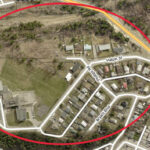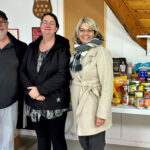Home »

Fishing for facts to help Westslope Cutthroat Trout
Summer is all about fishing for many folks in the Elk River watershed, but do we have all the facts to keep it sustainable and fishable into the future?
“The Elk River supports one of the few remaining genetically pure Westslope cutthroat trout (WCT) populations in B.C.,” notes scientist Stella Swanson, Director for the Elk River Alliance (ERA). “The Elk River supports a healthy population in part due to connected habitat needed by fish throughout their life-cycle from spawning to juvenile growth and adult overwintering.”
In B.C., WCT are federally and provincially listed as a species of ‘special concern’ and may become threatened or endangered if threats are not addressed. A report by the Ministry of Environment (MOE) in 2014, indicated that the Elk River watershed “faces some unique threats such as degraded water quality from coal mining, riparian clearing due to industrial and community development and increased angling pressure.”
All of these human impacts added together could result in a negative impact on WCT.
MOE also noted in 2014 that there are gaps in our knowledge about WCT, citing few studies on the Elk River population estimates and data regarding key habitat locations and restoration priorities. Without this information it is difficult to determine the impact of human threats, manage the population effectively or implement projects that could enhance fish habitat.
Spurred on by this gap in understanding, the ERA is attempting to fill some of these existing knowledge gaps in WCT research through their WCT Research Initiative.
Brett Elmslie, MSc Aquatic Biology and ERA’s Project Coordinator of Fish and Fish Habitat said, “the Initiative was launched in March 2019 to address concerns surrounding WCT in the Elk River watershed. The project aims to identify healthy and degraded fish habitat in order to highlight important areas for juvenile and adult WCT and if restoration opportunities exist. In doing this, we will attempt to summarize the information in a way people in the watershed can understand.”
Elmslie noted that “ERA recently completed spawning surveys in four tributaries of the Elk River, to help evaluate population trends for recruiting juvenille fish. This baseline information will improve our understanding of where important WCT habitat exists and provide a reference for future community-based restoration efforts.”
ERA is also strengthening community fish literacy.
“In June ERA hosted a workshop to educate the community on the WCT population,” said Elmslie. “Participants had a chance to share their concerns and as a group they identified 15 areas where WCT habitat has been degraded. We are now visiting some of these sites in the field to determine their level of degradation, and for prioritized sites, developing future restoration projects.”
ERA will be hosting another workshop in the fall of 2019 to discuss project results with the community. If you’d like more information about this project, WCT or are interested in volunteering contact Brett Elmslie at [email protected] or visit www.elkriveralliance.ca
ERA wishes to thank community volunteers for time committed walking and wading streams counting redds and assessing fish habitat. ERA acknowledges the financial support and technical assistance from the Habitat Conservation Trust Foundation and Teck.
Lead image: One of our volunteers assisting with surveying on Coal Creek in Fernie. Photo submitted
The Elk River Alliance (ERA) is a charitable, non-profit, community-based water group dedicated to connecting people to the Elk River watershed keeping it drinkable, fishable and swimmable for future generations. For more information call (250) 423-3322 or visit www.elkriveralliance.ca







